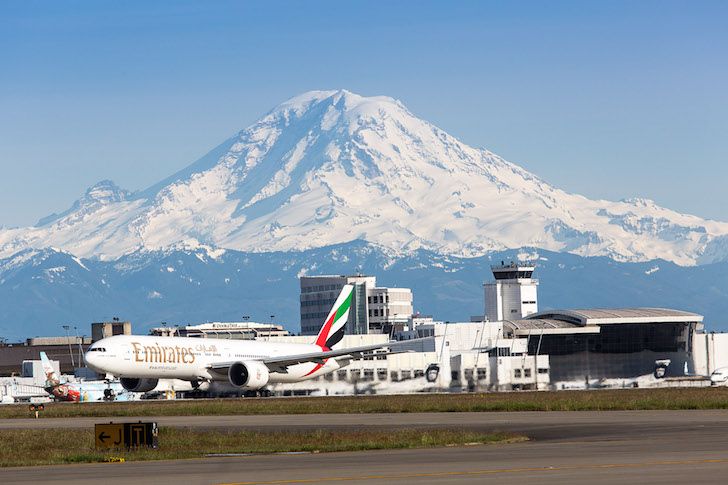Seattle-Tacoma International Airport (SEA) is facing an unusual operational challenge right before the busy Thanksgiving holiday. A pipeline leak has disrupted the airport’s primary jet fuel supply. This same pipeline delivers fuel to Portland (PDX) as well. Yet as PDX is a smaller airport, their are less issues in Portland than Seattle. While the airport remains fully functional, this issue is causing ripple effects and making airline comes up with unique options to refuel their planes elsewhere. This is becoming common on some cross country flights, flights to Hawaii and even some long-haul routes intercontinental routes.
A Broken Pipeline causes Issues
A leak in the Olympic pipeline managed by BP delivers jet fuel to Seatac airport and helps moves fuel across the Pacific Northwest. The Olympic Pipeline was shut down Nov. 11 because of a leak between Everett and Snohomish. Operators notified the state and began working with state and federal agencies to contain, clean and repair the line. Yet as of today, there is still no timeline of when the pipeline will reopen as they have not been able to locate the leak.
This has forced airlines to rethink their fueling strategies. Normally, this pipeline ensures a steady supply for all flights. Yet with the disruption, carriers are scrambling to maintain schedules without compromising safety. It will take 90 trucks in a 24-hour period to deliver even half of the fuel the airport needs. And remember, these trucks aren’t just readily available. As the pipeline is usually the source of transportation.
How Does This Affect Flights?
The fuel shortage is having different effects on different airline operations. It really depends on the flight length. On Sunday Alaska Airlines only had to divert 10 flights for fuel from Seattle. Yet looking at this weeks schedule we’re already seeing Delta Air Lines route some flights via other airport. Seattle to London will have a fuel stop in Detroit (DTW) on Nov 25. I’ve also seen in Facebook groups and on reddit about flights stopping in Pasco, Wa enroute to DC for fuel, and other flights to Hawaii making re-fueling stops before crossing the Pacific.
Short-Haul Flights are mostly operating as usual. Most domestic flights within the western U.S. are unaffected since they require less fuel and can be serviced with existing reserves. Airlines are being asked to refuel full at other airports. Inbound flights fill up their tanks all the way before departing and can sometime do full turns without the need to get fuel at SEA.
Long-Haul Flights are mostly going to feel the pain. International and transcontinental flights need more fuel and Alaska already operators many of their 737s at the top of their range. Some carriers are adding refueling stops mid-route. Stopping at hubs for fuel or even smaller cities across the country. Just where ever they know they can get fuel.
Thus far, most long haul flights are still operating as usual. But know, the longer this stretching on there are more potential delays. While airlines aim to keep departures on time, these extra stops can add an extra 30 minutes to a few hours to your journey. These delays also cause ripple affects throughout the entire system. Seattle is a major hub for Alaska and a smaller Hub for Delta. These two airlines will feel the affect of this fuel shortage more than an other Airlines
Major carriers operating out of SEA, including Delta, Alaska, and international partners. Delta does have a travel waiver in place for longhaul flights only for departures of November 23 – 28, 2025. Travelers can get a future travel credit or book travel free of charge with new departure dates as late as Dec 17, 2025.
Bottom Line
Seattle remains a key gateway for domestic and international travel, but until the pipeline is repaired, expect some creative solutions from airlines. If you’re flying long-haul from SEA, you might be taking the scenic route, whether you planned it or not. If you are flying from Portland or Seattle, be sure to check your flight status. Thus far PDX is not having the same problems as SEA. The longer it is until the pipeline if fixed, the more delays and extra fuel stops we’ll see.

